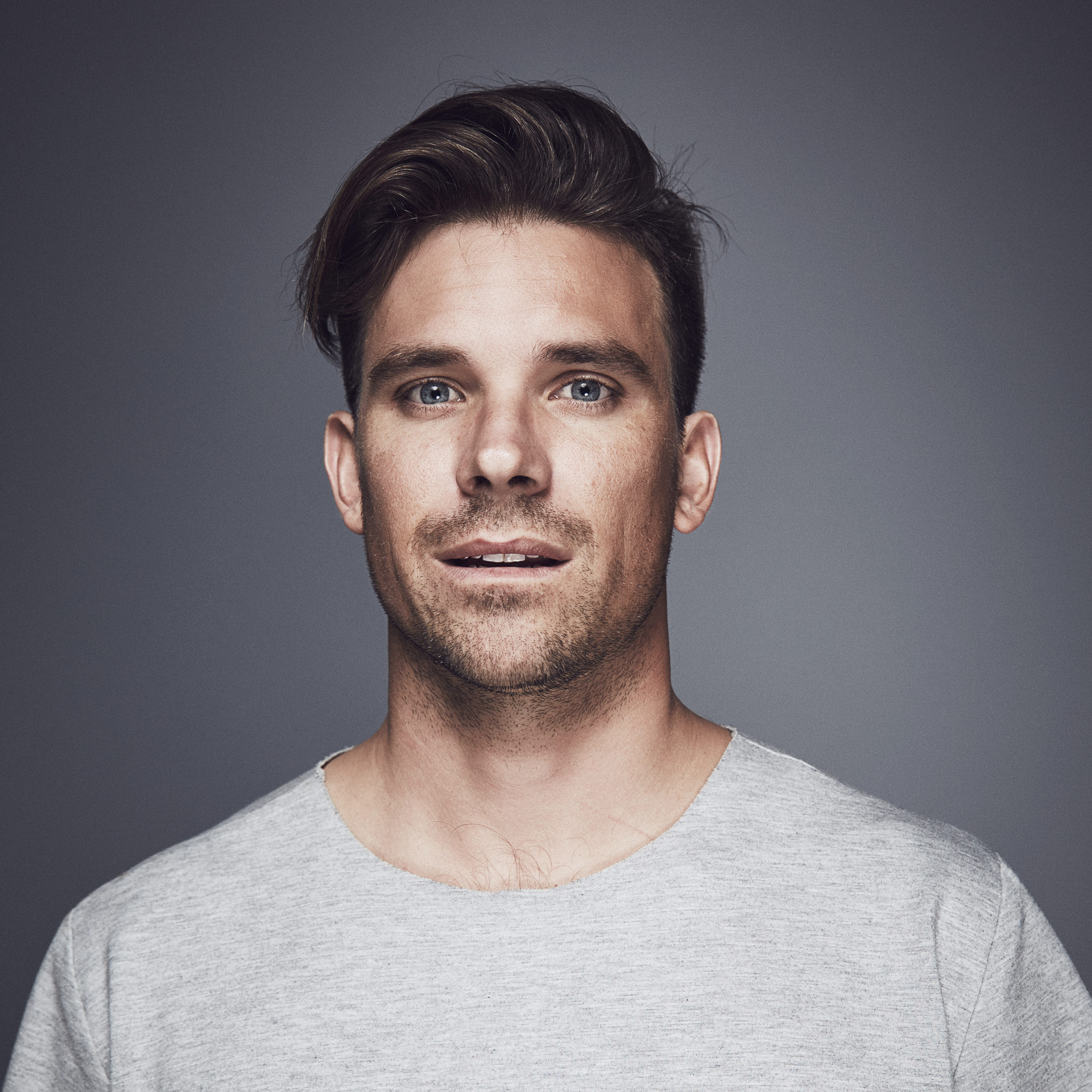
- Interview by Tammi Heneveld August 18, 2015
- Photo by Toby Pete
Hayden Cox
- designer
- entrepreneur
Hayden Cox is an Australian surfboard designer who got into the business of making surfboards at the age of 15 and continues to run his eponymous brand, Haydenshapes, today. Since introducing his patented FutureFlex technology and signature black carbon rails to the surfing industry in 2007, Hayden has taken home the award for Surfboard of the Year two years in a row, collaborated on a series of marble-printed boards with fashion designer, Alexander Wang, and most recently exhibited an installation of his boards at the renowned Carriageworks contemporary art center in Sydney.
Describe your path to what you’re doing now. I grew up in Australia and started surfing when I was four years old. I had a passion for it immediately. My mom took my siblings and I camping on the beach all the time, and we watched the surfers, so it was natural for us to want to learn how to surf.
When I was about 15 years old, I snapped my surfboard. I had been taking woodworking and metalworking classes at school, so I thought, “The cheapest way to get a new board is to build it myself.” I decided that the best path to learn how to do that was by getting hands-on experience at a surfboard factory in Mona Vale during my school holiday.
The first experiences I had at the factory involved doing tasks like sweeping the floors and cleaning the toilets—basically, all the worst jobs. When Rod, the guy in charge, found out that I was supposed to be on holiday, he felt so guilty that he decided to show me how to shape boards. He and I made a board together, and it was so much fun: I shaped one side of the board and he shaped the other. It definitely wasn’t the best board I’ve ever made, but I loved it to death and used it as long as I could.
After that experience at the surfboard factory, I was fully hooked. I began making my own boards and discovered that shaping combined several passions of mine: design, working with my hands, and surfing. I continued making boards and eventually convinced my best mate to buy a board from me, even though I still had no idea what I was doing. (laughing) Everything began to grow from there. I gave boards to kids at parties, shaped boards for my teachers, and did all of my school assignments on surfboards. In my head, I started building this dream of being an amazing surfboard designer. Over time, I honed my skills and learned new techniques, eventually reaching a point where I was making between 100 and 150 boards a year. I had a little business going, and I even created a hand-drawn “HS” logo for it. I essentially formed all the basics of the Haydenshapes brand while I was in high school.
Wow. Yeah. After I graduated high school, my parents wanted me to go to university and take the normal career path that most kids are expected to go down these days. But that didn’t make sense to me. I wanted to keep making surfboards and start formalizing my business. I didn’t know exactly what that meant, but it mattered to me, and it’s important to me to always remember that. Whenever I think about growing my brand now, I want to make sure I stay true to the original dream I had when I was 15. I’ve learned that if I keep going after that initial vision, everything else falls into place.
For a while, I was shaping, landing gigs, and going on surf trips for months at a time. I was running a business without any formal structure or overhead because I worked out of someone else’s premises. When I was 22, I bought my own factory so that I could have better control over how my boards were manufactured. That also meant I had to employ a staff, train them, manage the factory, and maintain the quality of my designs. My approach has always been to start with a vision and figure out the details along the way, so it was a huge learning process. I had a little showroom to run, money to manage, emails to answer, and a website to keep up to date. I wasn’t out surfing my ass off all day—I worked seven days a week for three years to make it happen.
“After I graduated high school, my parents wanted me to go to university and take the normal career path that most kids are expected to go down…But that didn’t make sense to me. I wanted to keep making surfboards and start formalizing my business.”
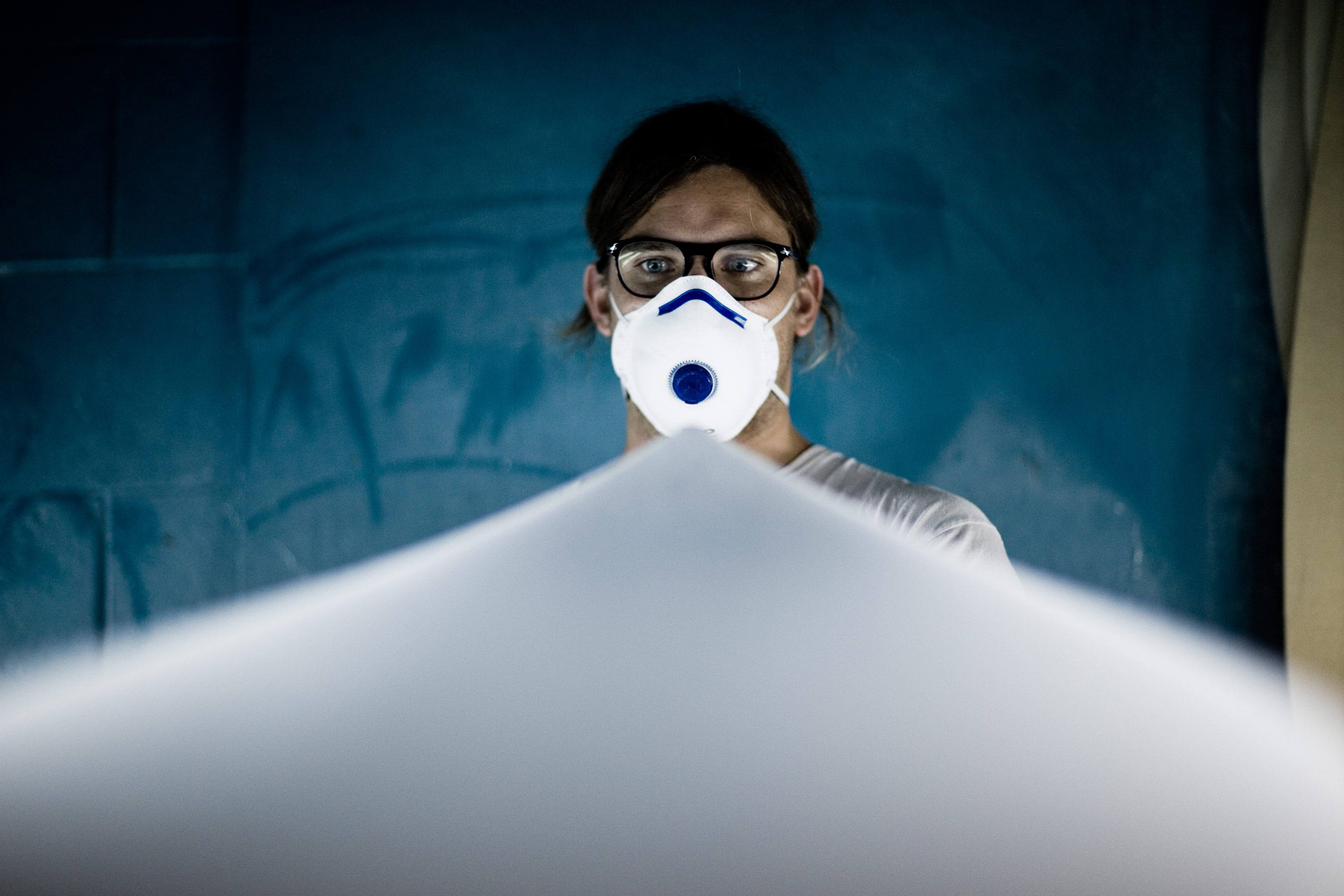
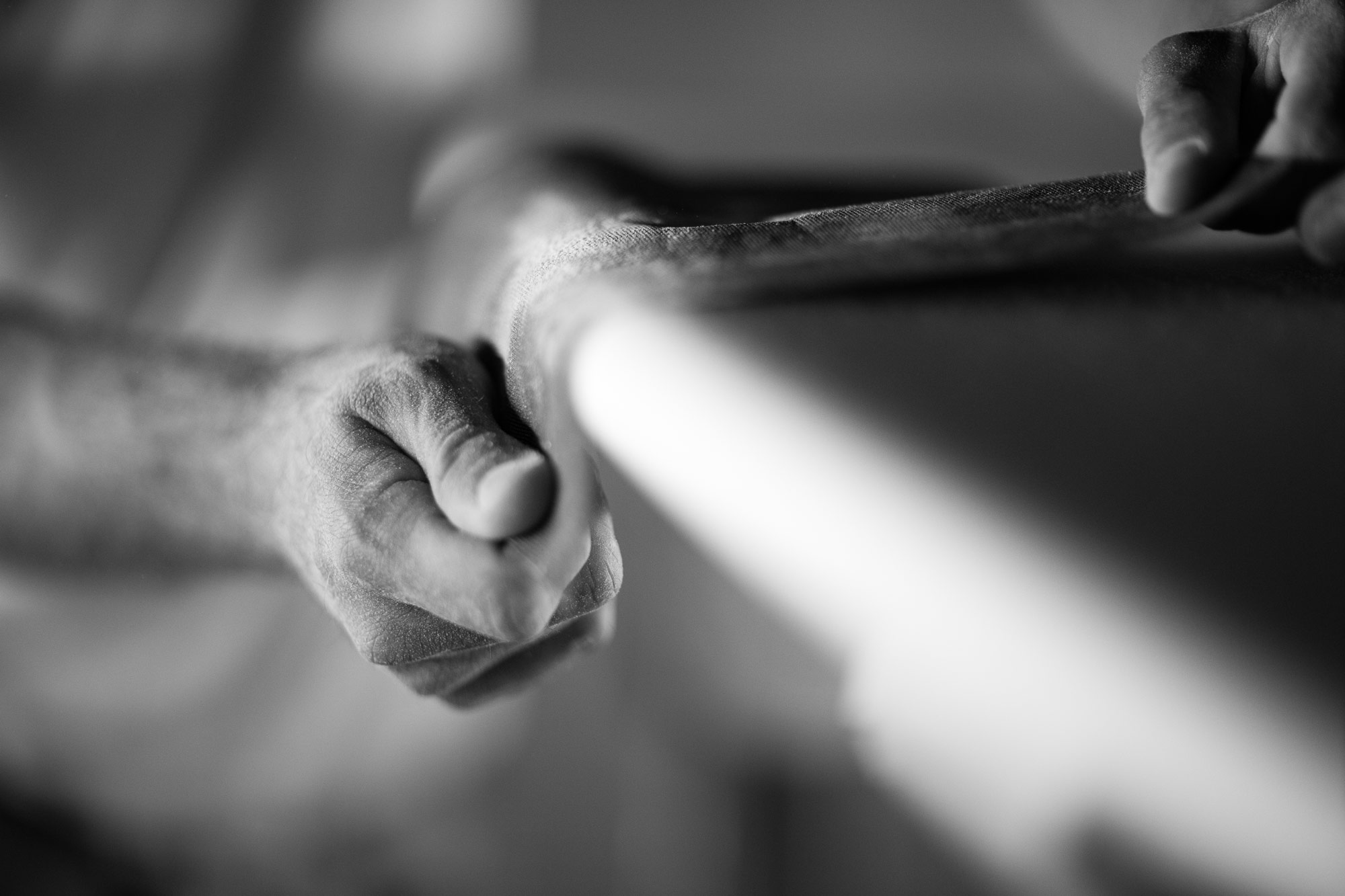
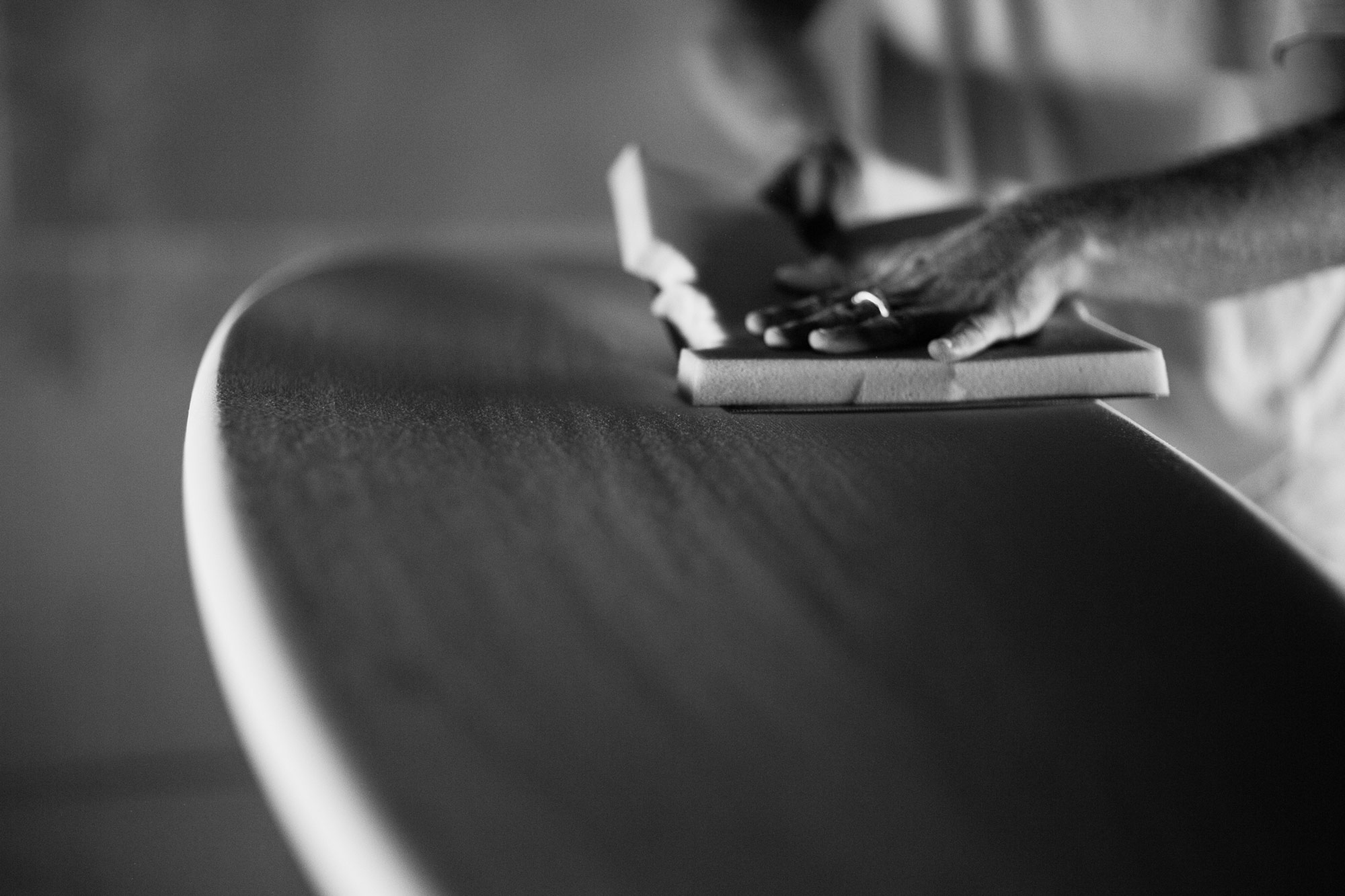
A lot of surfboard shapers don’t want the commitments, overhead, and formalities that come with owning a business. They like having freedom, but I actually enjoy handling the business side of things. I find it challenging, and I enjoy the hard work that comes with it. Luckily, all my hard work paid off, literally—I paid off the factory within a year and a half. And it became more manageable once I had three or four staff members to help me run the business. Everything was humming along.
After some time, I became bored. I realized that shaping wasn’t all I wanted to do for the rest of my life. I didn’t want to spend every single day doing the same thing over and over. So I started thinking of ways I could evolve my brand. I knew my product wasn’t going to be bought by every person, but maybe it could be bought by every company? I thought about the sound technology brand, Dolby Digital. I remembered seeing Dolby Digital on the front of my stereo system growing up. It was on every single brand of home theater system. Why not market my surfboard technology in the same way?
I wanted to make something that every surfer in the world could ride. That’s how I came up with the idea for the FutureFlex technology and black carbon rails that our brand is now synonymous with. I created a surfboard structure made from a high-density expanded polystyrene (EPS) foam with a parabolic carbon fiber frame: the result is a lighter, faster board that can handle a wider variety of wave conditions because it flexes with the movement of the water rather than twisting against it.
Surfers talk about having a “quiver,” which is a set of boards you take with you to ride all types of different waves. FutureFlex technology and carbon rails have enabled surfboards like our Hypto Krypto model to handle everything from poor, knee-high conditions to some of the best waves in the world, essentially making it a one-board quiver. After numerous rounds of testing, I applied for a design patent in 2007, brought FutureFlex to market, and licensed the technology to major surfboard companies around the world. I was about 27 years old when I applied for the patent, and it was an incredibly important direction for me to take. Today, our boards are carried in about 70 countries. We’ve recently been awarded Surfboard of the Year two years in a row by the Australian Surf Industry and have been recognized for the same vision I’ve had since I was a kid.
It’s incredible to me that I still get to do what I started out loving at 15, and that I still enjoy doing it. I’m 33, and I’ve been doing this about 18 years now, so I have at least another 20 or 30 years to add to this story. I’m so glad I didn’t conform to my mom’s wish for me to go off to university and become an accountant. (laughing)
I think she’s probably alright with everything you’re doing now. Oh, yeah. She has realized that, at the end of the day, if I’m passionate about something, I’m going to go do it. I’m keeping busy, and I get to create for a living. Now I’m lucky that my wife, Danielle, is on this journey with me as well. She and I are able to work on business projects together and get to do something that we’re both passionate about.
One of the best aspects of running your own business is that there are no boundaries for where you can go: it’s completely up to you. You have the freedom go after what you want, and if you’re passionate and dedicated, then you’ll generally end up being successful. It takes a lot of hard work, but if you’re passionate about what you do, you’ll enjoy the journey.
Was creativity part of your childhood? My dad comes from an engineering background and did a lot of work around the house, and my mom worked as a project manager for new home construction. It’s in my nature to want to build things. I wouldn’t say I was artistic in terms of painting or other traditional forms of art, though: I was more interested in design, the scientific and mathematical aspects of it, and analyzing how things worked together.
Surfboard shaping combines art and science. It’s sometimes hard to analyze because there are so many different variables to consider. It’s not like you can put a surfboard on a machine and say, “This is how it’ll work in the water,” because every wave is different, and every surfer is a different shape and size. But you can break down components of it and try to control as many variables as possible. For instance, using one type of resin might lead to a very different result compared to another. The fun part is that you get to go out and test it—not that I get to do that all the time, but it’s still part of the job description.
It sounds like there’s quite a bit of physics and engineering involved. Have you had formal training? Four years after I graduated high school, and about a year after I bought my factory, I attended university because my mom was still trying to convince me to pursue accounting. (laughing) I didn’t always show up for classes because I wasn’t always interested in the subjects. However, new subjects that I could connect to surfing, like statistics, were interesting to me. I generally find that if I can relate a course of study back to something I’m interested in, I love learning about it.
After about a year and a half of university, I didn’t have any more interest, so I stopped going. Aside from that, I haven’t had any formal training in what I do. But being self-taught doesn’t mean I’ve taught myself everything. I’ve learned a lot about running a business and shaping surfboards from other people both inside and outside of this industry. You can learn from so many things and people around you, directly and indirectly. If you have an open mind and stay receptive to what’s around you, you’ll be better for it.
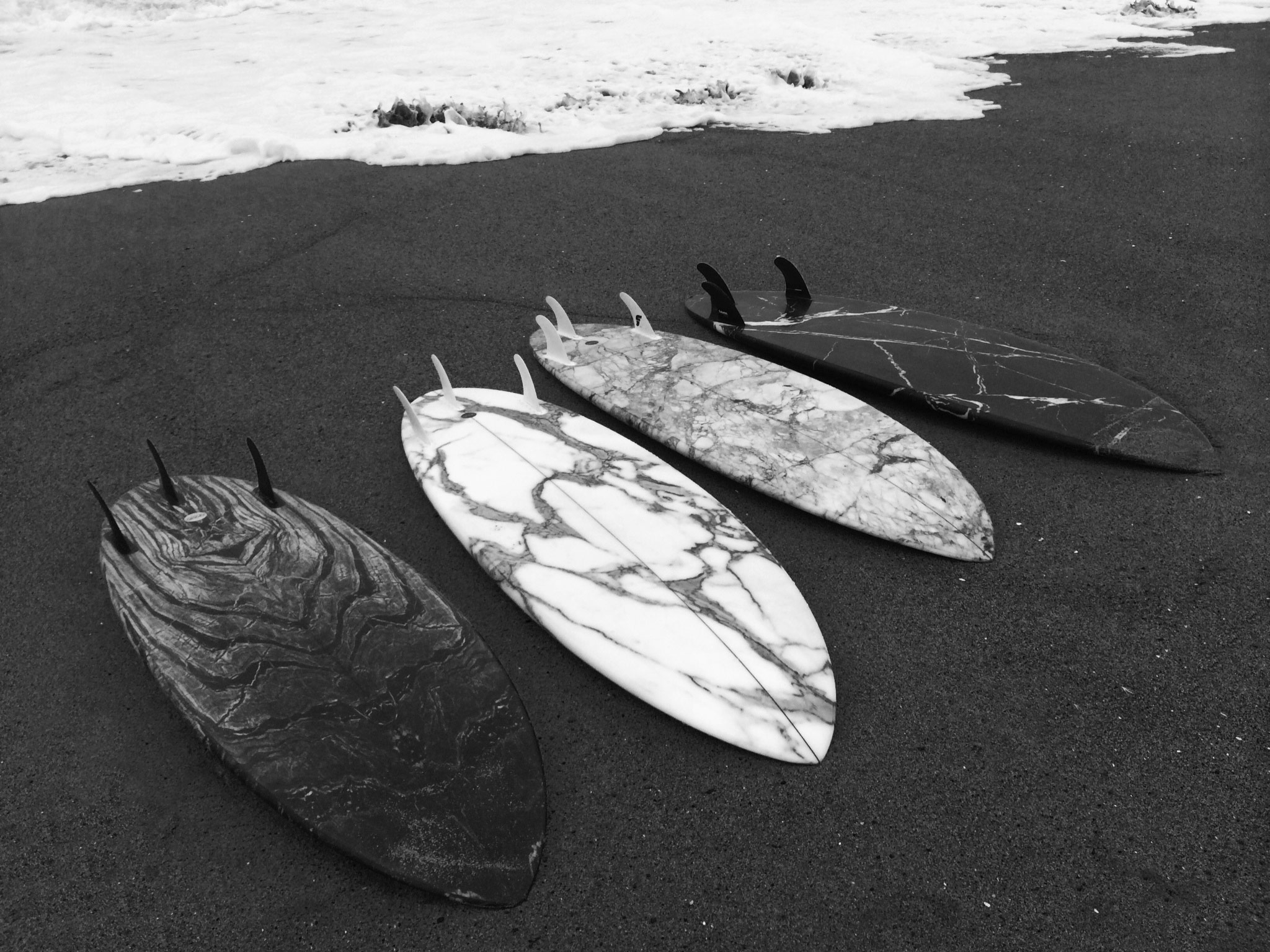
“My dad comes from an engineering background…and my mom worked as a project manager for new home construction. It’s in my nature to want to build things.”
A friend of mine who surfs told me that the relationships between surfboard shapers and professional surfers are very close. How does your connection with professional riders like Craig Anderson influence how you design boards? Yeah, the surfer-shaper relationship is really important. The cool thing about Craig is that I’ve been shaping his boards since he was 15 years old. It’s a long-term relationship. (laughing) Sometimes Craig doesn’t always know how to describe exactly how his board is riding or how he feels when he rides it, so over the years I’ve learned to understand how he thinks about those kinds of things. He and I actually ride the same size board, so I can potentially sense how a board will perform for him. Craig puts a lot of trust in me as a designer, but that doesn’t mean that he’s always excited to go out and surf a new board the day he gets it. I could shape him a brand new one, but if he has a board he loves already, he doesn’t get off until it’s broken or literally cannot be used anymore.
The best part of that relationship is getting to watch Craig ride my boards on the most amazing waves in the world. To be honest, he has one of the most stylistic approaches to surfing in the world today, so you couldn’t ask for a better representation of how our boards perform. I prefer to have a strong connection and understanding with a few select surfers so I can get the most focused feedback, which allows me to keep designing the best boards I can.
Have you had any mentors along the way? I haven’t had a specific mentor, but I have had opportunities to speak to people who are successful and innovative in their own industries. A great example of that is the founder of Oakley, Jim Jannard. He started out by wanting to develop the best motorcycle grip in the marketplace, so he launched the Oakley brand for that product and eventually went on to develop goggles and sunglasses. Talking with people like him inspires me to think about the different directions I could go in.
Tom Carroll has mentored me in a lot of ways and given me the confidence to go after my design ideas. He’s a two-time world champion surfer and an industry icon. I’ve shaped a lot of boards for him and have been able to work with him over the last 12 years. He and I have worked on projects together, like Storm Surfers. For that, we worked with an architect to develop a special board that can handle intensely stormy, windy conditions in order to surf the biggest open ocean waves in the Southern hemisphere. Tom has a good way of articulating design feedback, and he still has the enthusiasm of a 15-year-old even though he’s in his 50s, which makes him great to work with.
Have you taken any big risks to move forward? Oh, definitely. I don’t have investors. I still own 100% of my brand. The business has been hedged on the fact that I have to get x amount of sales in the door. There have been times when I’ve been close to being bankrupt. At one point I said, “I’m either going to be successful at this by the time I’m 30, or I’m shutting the doors.” I signed a global distribution deal two months before I turned 30.
A big risk was when I bought a factory at age 22. I realized I had to get serious. I had to have proper financial accounts, file taxes, get insurance—all those administrative nightmares that take time and money. I thought, “Wow, I was making way more money when I didn’t have to do any of this official stuff!” But sometimes you have to grow up. You’ve got to grow from your missteps, and that doesn’t always mean you’re going to be profitable. It might take five years of hard work without making much money, but you still need to go down that path, because that’s your dream. When I struggle, I have to go back to my original vision.
Now I’ve got my wife, Danielle, on this journey with me, so there are two of us to make the decisions, which definitely reassures me and gives me more confidence.
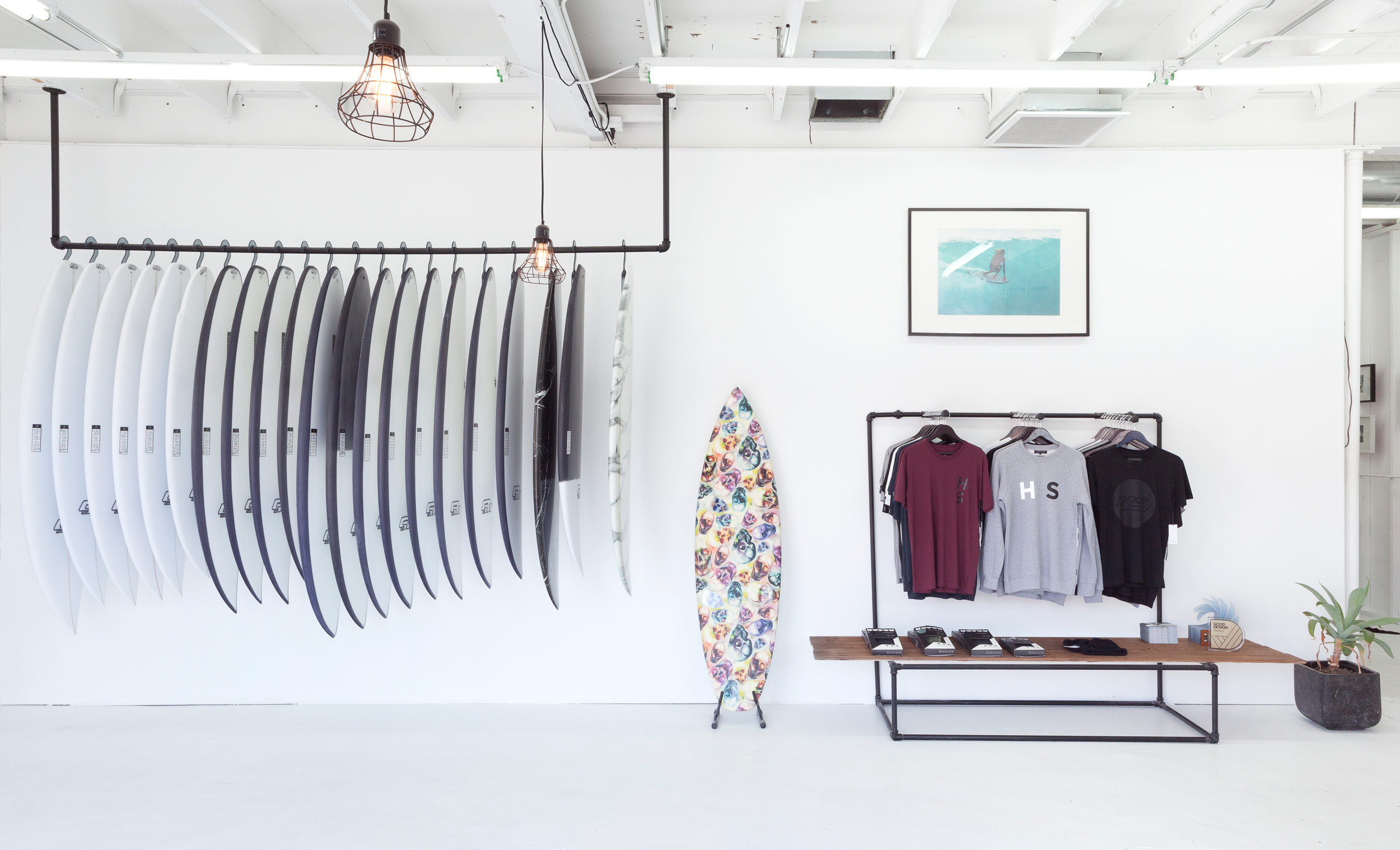
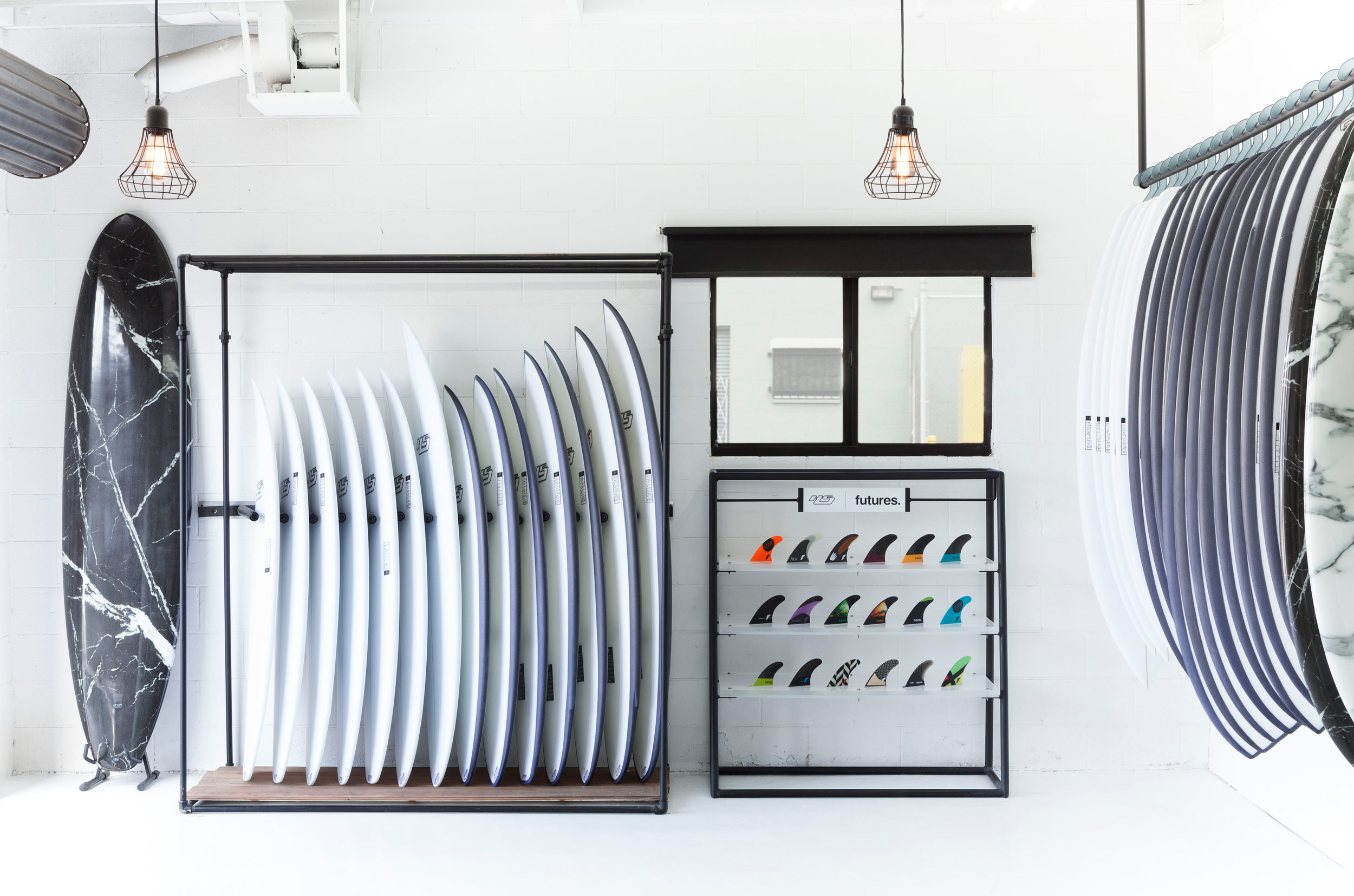
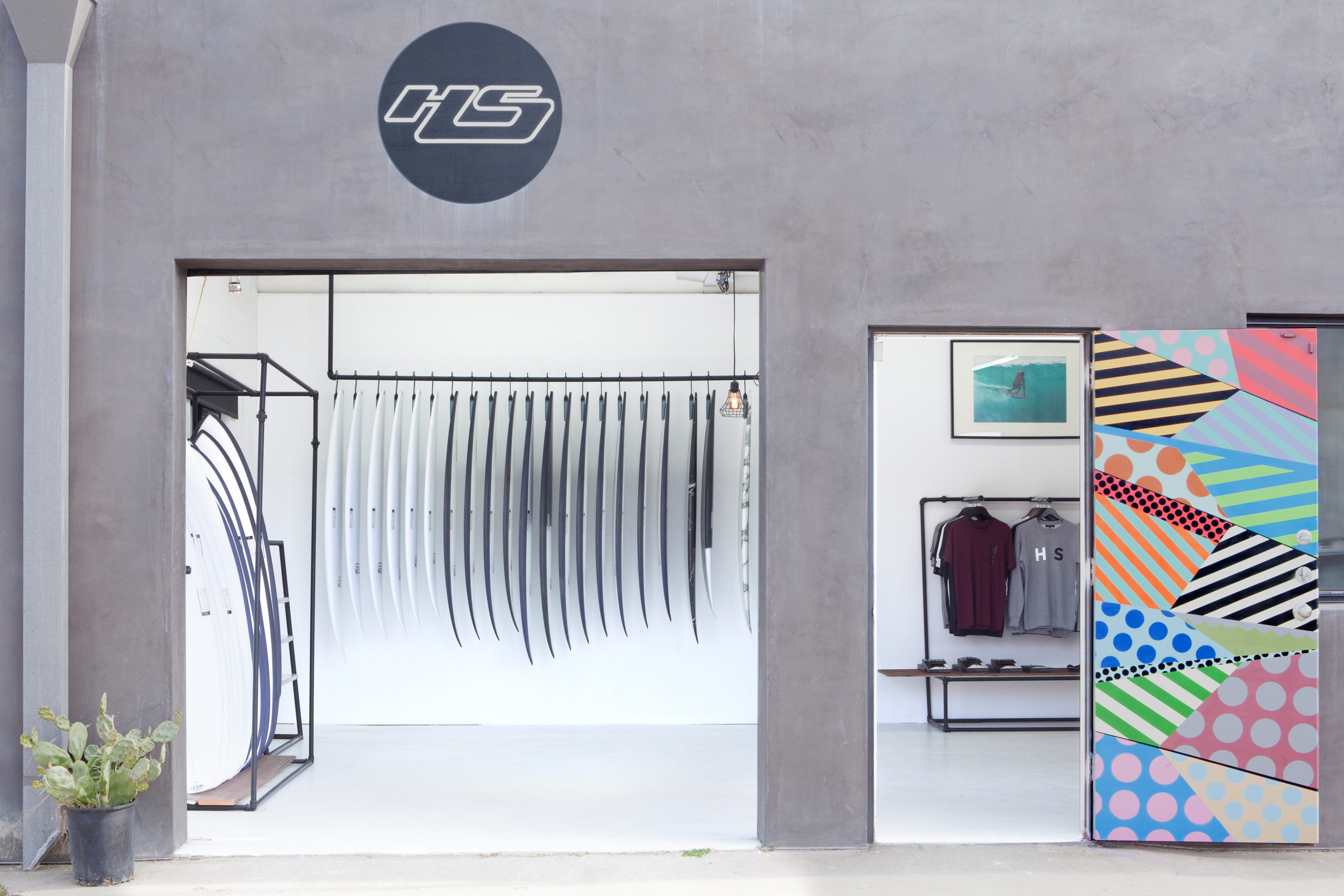
What is it like working with your partner? Danielle and I are there for each other, which is really important. It is challenging working as a couple, but, at the same time, it teaches us about each other. We have to learn how to compromise in some situations and how to speak the truth. You have to have a real relationship, because you can’t hide from anything when you’re living and working as a couple. Regardless, it’s incredibly fulfilling to have someone to support you in the difficult times and celebrate with you in the good times. I wouldn’t want it to be any different.
What do your friends and family think about your work. Are they supportive? For sure. My family, Danielle’s family, and all of our friends are supportive. I have friends I’ve known since I was three years old who have supported me on this journey. This can be a lonely path because you can easily bore your friends and family with conversations about the same triumphs and challenges over and over. But true friends are there through it all, and they still want to catch up over a beer, go for a surf with you, and come to your events. We’re lucky to have such a great crew around.
Are you creatively satisfied? Honestly, I could be more satisfied. If I could work on the creative side of the business, 24–7, with no budget constraints and unlimited money and resources to execute projects, I’d probably be overly creatively satisfied. (laughing) But that’s one of the challenges of being in business: you have to run a business and find creativity in everything you do.
If you were to give advice to a young person just starting out, what would you say? Have a vision for what you want to create and go after it. You need to be confident in your ability to execute your idea from start to finish, but if you think about the details too much, then you won’t do it. It’s like taking off on a big wave: as soon as your brain overthinks it and pictures what might happen, it’s too late—you’re going to fall off. When there’s doubt, you’re opening a door for negativity to enter. Initially, you just have to go for it. You need that kind of confidence and risk-taking nature to believe in your idea.
There will be hard times, but don’t give up. When your back is up against a wall, you have to find a way to overcome the challenges you’re facing. You can jump over the hurdle, crawl under the hurdle, or go around it—but you’ve got to get past it. Stick to it and stay true to your original vision.
Don’t be afraid to change and learn from mistakes in your original concept. Be prepared and stubborn enough to go after your original vision, but not so arrogant that you won’t change the idea. Recognize your weaknesses and work to improve them.
“If people can have some of their best surfing memories on one of my boards, then that would be an amazing legacy.”
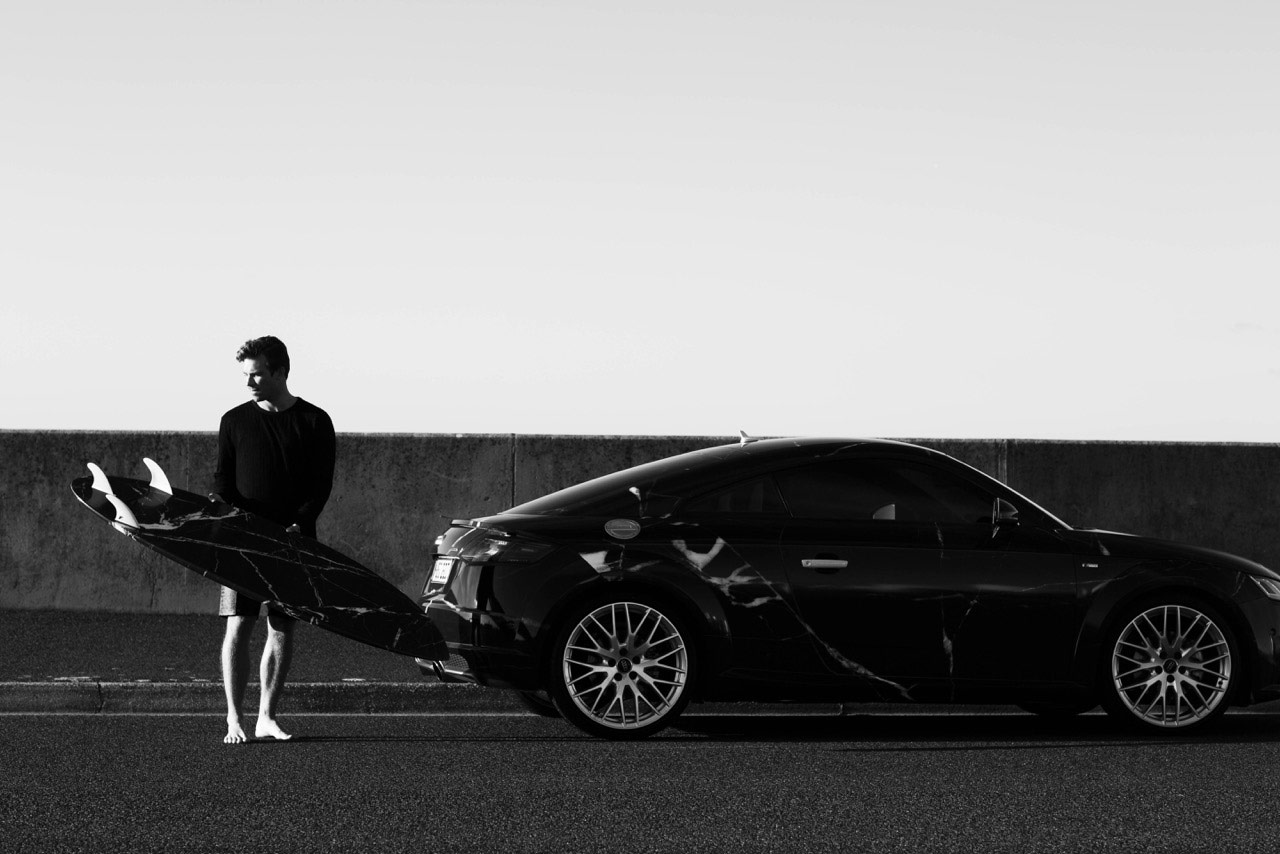
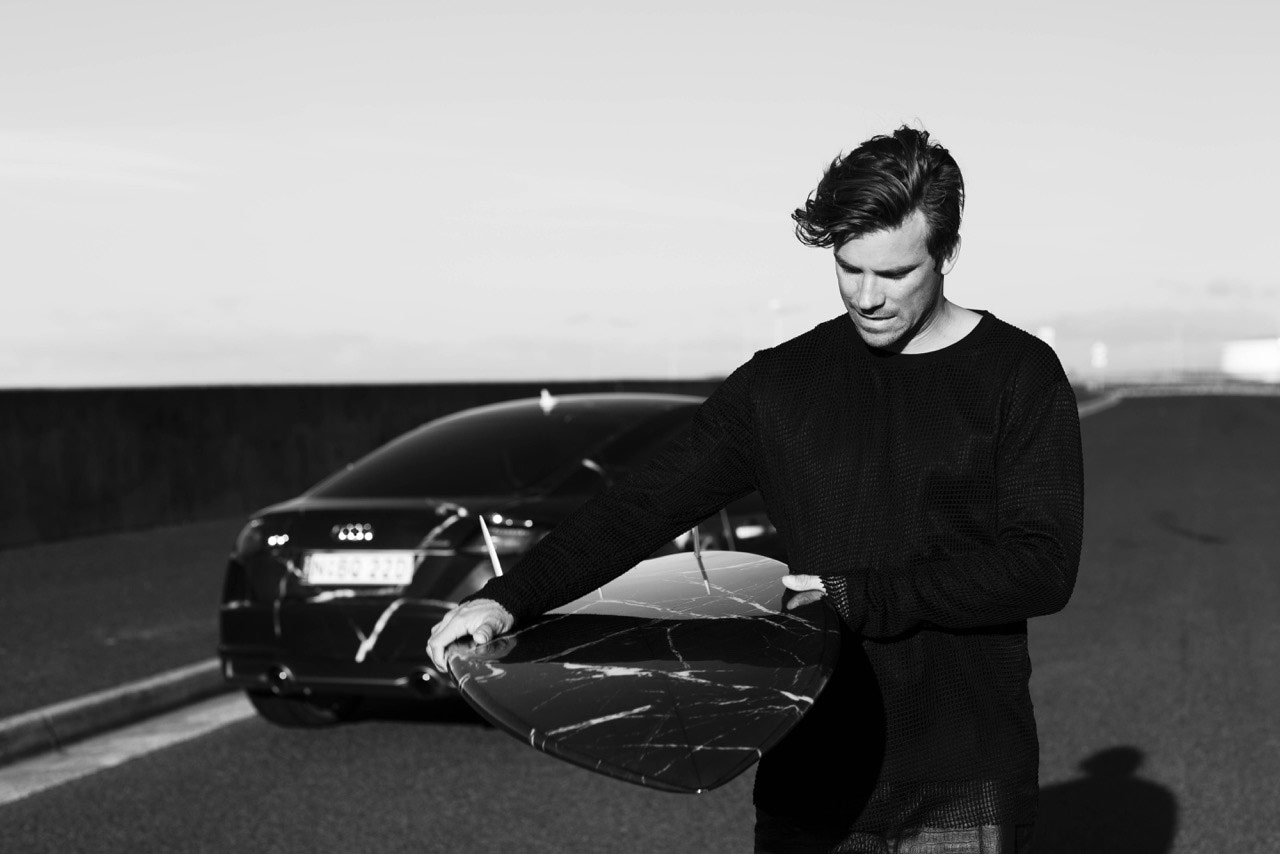
You’ve done collaborations with several creatives outside the world of surfing, including a surfboard wrap collection with Alexander Wang. Is it important to you to be part of a creative community? Yeah, definitely. The Marble Collection is a series of marble-wrapped surfboards created for display in Alexander Wang’s New York and Tokyo stores. It’s one of the more well-known creative projects we’ve worked on. It was an amazing experience to work with Alexander Wang and his team. They put their own creative spin on our marble concept, but allowed us to ensure that the boards would still provide the high-quality performance people expect from us. Working with Alexander Wang opened my eyes to the attention to detail that he and his team put into their fashion line and retail presence. Because of that, it pushed my skills to the next level.
More recently, we did an exhibition presented by Audi at the Semi-Permanent Design Conference at Carriageworks. We displayed our full model range, including the Alexander Wang marble collection. We also used recycled craft board to build a giant wave installation, which was hand-painted by New York artist, Jason Woodside. That was a fun experience because Carriageworks is an iconic place in Sydney. Fashion Week is held there, and they always have the coolest art exhibits. I never in my life thought that I would be displaying my surfboards there.
What is a typical day like for you? If I can, I love surfing in the morning before work. Generally, I’m touching all areas of the business on any given day. I communicate with our Australian and US teams, manage finances, talk with Danielle about marketing and PR, and guide my staff on different projects we’ve got going on. After that, I do my part to design boards and test new materials. I generally work long days because we cover two time zones. This year, I’ve traveled back and forth between the US and Australia almost every two months.
It can be exhausting, so I try to take moments to relax when I can. It’s key to have a healthy balance in life. At night I might read a book or watch TV or go for a walk. If I have the energy, I’ll go socialize with friends. Since I travel so much, there isn’t always a set structure. Depending on the time zone, sometimes I physically can’t keep up and other times I’ll get a second wind. I have to be a bit of a chameleon in some ways.
What kind of legacy do you hope to leave? I would like people to remember me as someone who led innovation within the surfboard industry, who didn’t rely on trends, and who made boards the way I wanted to. If people can have some of their best surfing memories on one of my boards, then that would be an amazing legacy.
“There will be hard times, but don’t give up. When your back is up against a wall, you have to find a way to overcome the challenges you’re facing. You can jump over the hurdle, crawl under the hurdle, or go around it—but you’ve got to get past it. Stick to it and stay true to your original vision.”